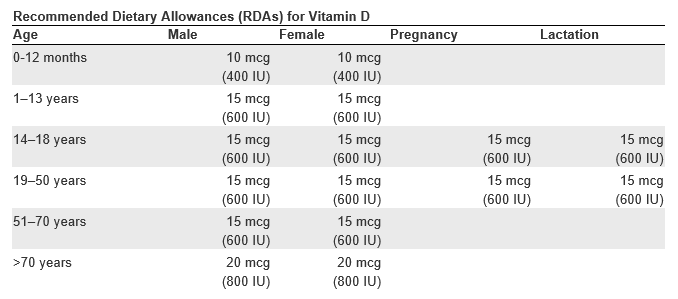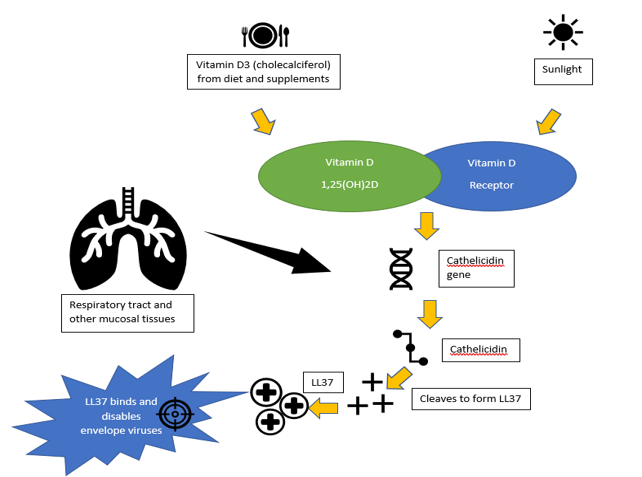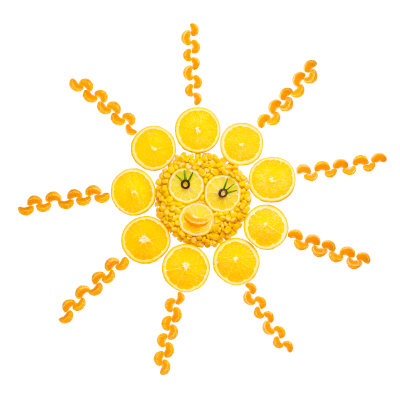Vitamin D is a group of fat-soluble secosteroids responsible for increasing intestinal absorption of calcium, magnesium and phosphate. Also known as “calciferol” and even the “sunshine vitamin,” it is also involved in immune function and protecting heart, bone and muscle health. Vitamin D can be obtained in foods such as fatty fish, beef liver, cheese, egg yolks, mushrooms and some vitamin fortified food products like milk, plant milk, ready to eat cereals and orange juice. Probably the most accessible source of vitamin D comes from exposure to sunlight. It is produced when ultraviolet (UV) rays from sunlight strike the skin and stimulate Vitamin D synthesis. Just remember though: You don’t get that same effect from sunlight through a window! Other factors to take into consideration regarding vitamin D synthesis are season, time of day, length of day, cloud cover, smog, skin melanin content and use of sunscreen or clothing.
Vitamin D recommended intake:

How does the process work in relation to protecting the body from viruses such as the SARS-CoV-2 virus? After vitamin D has been absorbed into the body, the inactive vitamin D compound is then sequentially hydroxylated in the liver and kidney to form 25-hydroxyvitamin D3 (25D3) and active compound 1,25 dihydroxy vitamin D3 (1,25D3). The active form of vitamin D, 1,25(OH)2D, then binds to the vitamin D receptor. This then stimulates the transcription of cathelicidin. Cathelicidins are small, cationic, antimicrobial peptides produced by neutrophils, endothelial cells, macrophages, mast cells, natural killer or NK cells (a type of white blood cells) and respiratory epithelial cells. Cathelicidin is then cleaved to generate Leucine-leucine-37 (LL37). LL37 then binds and disables microbes by creating an opening in their vulnerable structures. In the case of the SARS-CoV-2 virus, LL37 destroys its protective envelope. Here you can see the process step by step:

It has also been found that vitamin D signals the regulation of autophagy (a natural process in which the body’s cells clean out any damaged or unnecessary components), from induction of autophagosome formation to the increase of phagosomal maturation and modulation of antimicrobial response to specific microbes. Vitamin D also plays a large role in the balance of the breakdown and repair of lung and other mucosal tissues.
There are multiple studies either supporting or contradicting the use of vitamin D to help treat COVID-19. COVID-19 has altered the lives of many and there is still much to discover about this disease and how our bodies can help us fight this tiny microbe that caused all this trouble. In the meantime, let’s do what we can in terms of maintaining our health, including getting our vitamin D!

The post COVID-19 and vitamin D: Does it matter? appeared first on 3M Inside Angle..





